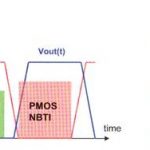The way SoC size and complexity are increasing; new ways of development and verification are also evolving with innovative automated tools and environment for SoC development and optimization. IP based SoC development methodology has proved to be the most efficient for large SoCs. This needs collaboration among multiple players… Read More
Tag: xilinx
Breaking the Limits of SoC Prototyping
Earlier this month during my conversation with Dr. Walden C. Rhines, he emphasised the need for our next generation designers to think at system level and design everything keeping the system’s view in mind. The verification will go through major transformation at the system level. I can see the FPGA prototyping systems already… Read More
FinFET Reliability Analysis with Device Self-Heating
At the recent TSMC OIP symposium, a collaborative presentation by Synopsys and Xilinx highlighted the importance of incorporating the local FinFET device self-heating temperature increase on the acceleration of device reliability mechanisms.… Read More
Xilinx Beats Altera to the First FinFET FPGA!
Why do I stalk the FPGA industry? Well, FPGAs are an important part of the fabless semiconductor ecosystem for two reasons: 1.) They enable very cost effective design starts which are the life’s blood of the semiconductor industry and 2.) FPGA prototyping allows designers to verify their designs before committing to silicon and… Read More
Xilinx Skips 10nm
At TSMC’s OIP Symposium recently, Xilinx announced that they would not be building products at the 10nm node. I say “announced” since I was hearing it for the first time, but maybe I just missed it before. Xilinx would go straight from the 16FF+ arrays that they have announced but not started shipping, and to the… Read More
Xilinx is a Software Company
If you think of Xilinx the word that immediately comes to mind is FPGA. After all they were one of the pioneers of the space. FPGAs are a means of implementing hardware, and the main implementation methodology is RTL-based. This compares to writing software and compiling it for a microprocessor, which is the main software implementation… Read More
NIWeek: Xilinx Inside
Being from Britain, NI always means Northern Ireland when I see it. After all the official name of my country is the United Kingdom of Great Britain and Northern Ireland, giving us the same problem as the United States of America, the full name is a mouthful. So we abbreviate the country to UK and call ourselves British or even Brits.… Read More
Xilinx Datacenter on a Chip
I talked recently about the Intel acquisition of Altera which seems to be all about using FPGA technology to build custom accelerators for the datacenter. Some algorithms, especially in search, vision, video and so on map much better onto a hardware fabric than being implemented in code on a regular microprocessor.
So if the heart… Read More
Why Did Intel Pay $15B For Altera?
While I was at the imec Technology Forum someone asked me “Why did Intel pay $15B for Altera?” (the actual reported number is $16.7B).
The received wisdom is that Intel decided that it needs FPGA technology to remain competitive in the datacenter. There is a belief among some people that without FPGA acceleration available for vision… Read More
Xilinx in an ARM-fueled post-Altera world
When the news broke about the on, off, and on-again Intel-Altera merger a few weeks ago, I checked off another box on my Six Degrees of Kevin Bacon scorecard. That plus a $5 bill gets me a Happy Meal at McDonalds, but in a post-Altera world, it might be worth more.
On January 16, 2008, I’m sitting in a meeting with some Intel strategic marketing… Read More


